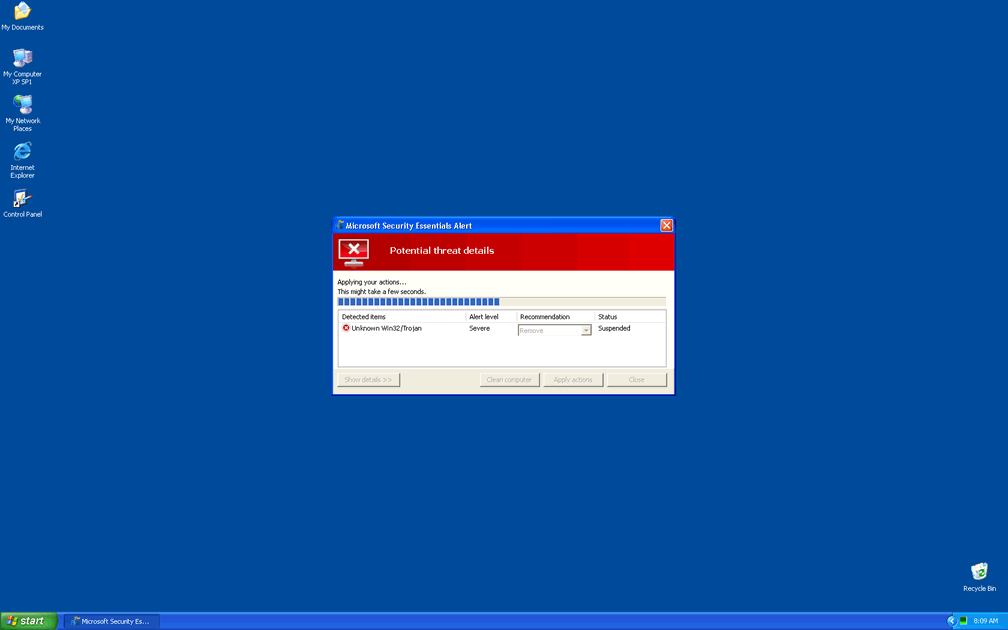Xam Ransomware
Cybersecurity researchers identified the Xam Ransomware during their investigation of potentially intrusive and threatening programs. Ransomware is malware specifically designed to encrypt victims' files with the intent of extorting money from them in exchange for decrypting (recovering) the data.
Once activated on compromised devices, the Xam Ransomware initiates its attack by encrypting files and appending a '.xam' extension to their names. For example, a file originally named '1.doc' would be transformed into '1.doc.xam', while '2.png' becomes '2.png.xam', and so forth for all affected files. Upon completing the encryption process, Xam generates a ransom note titled 'unlock.txt.' This note typically provides instructions from the attackers on how to pay the demanded ransom and gain access to the encrypted files.
The Xam Ransomware May Lead to Significant Disruptions by Locking Data
The ransom note from Xam informs the victim that their databases, documents, photos, and other important files have been encrypted. The attackers demand a payment of 100 USDT (Tether cryptocurrency) in exchange for the decryption tool. As of the time of writing, this amount is equivalent to approximately 100 USD (though this value may fluctuate in the future).
Cybersecurity researchers caution that decrypting files without the involvement of cybercriminals is typically not feasible. Furthermore, even if the ransom payment is made, there is no guarantee that the cybercriminals will provide the promised decryption keys or software. Therefore, experts strongly advise against complying with the criminals' demands, as sending money only perpetuates criminal activities.
To halt further encryption by the Xam Ransomware, it is imperative to remove the malware from the operating system. However, removing the ransomware will not automatically restore the files that have already been encrypted. Recovery of encrypted files may require restoration from backups or the use of decryption tools if available.
How Can You Protect Your Devices and Data from Ransomware Threats like Xam?
Protecting devices and data from ransomware requires implementing a blend of proactive measures and security best practices. Here's how users can better protect their devices and data from ransomware:
- Keep Software Upgraded: Ensure that your operating system, software applications, and anti-malware programs are regularly updated with the latest security patches and updates. Vulnerabilities in outdated software could act as infection vectors to be exploited by ransomware attackers.
- Use Strong, Unique Passwords: Use complex passwords for all accounts and devices. Avoid using easily guessable or common passwords and consider using a dedicated password manager to create and store your passwords securely.
- Enable Two-Factor Authentication (2FA): Enable two-factor authentication (2FA) wherever possible. This adds more security because it requires a second form of verification in addition to your password.
- Backup Data Regularly: Regularly back up important data and files to an exterior hard drive, cloud storage, or another safe location that is not continuously connected to your devices. This allows you to recover your data in case of a ransomware attack without having to pay the ransom.
- Be Cautious with Links and Email Attachments: Be careful when dealing with email attachments or accessing links, especially from unknown or suspicious sources. Ransomware often spreads through phishing emails containing unsafe attachments or links.
- Use Reliable Security Software: Install dependable anti-malware software on all devices and keep it updated. Use additional security tools such as firewalls to protect against unauthorized access.
- Educate and Train Users: Educate yourself and others in your household or organization about ransomware threats and safe computing practices. Train users to recognize phishing attempts, suspicious websites and risky behaviors.
- Limit User Privileges: Restrict user privileges on devices to reduce the impact of ransomware in case a device is compromised. Users should only have access to the resources necessary for their tasks.
- Stay Informed and Vigilant: Stay updated on the latest ransomware threats and cybersecurity news. Be vigilant about unusual activities on your devices and networks.
By following these proactive measures and security best practices, users can significantly reduce the probability of falling victim to ransomware infections and protect their devices and data from cyber threats.
The full text of the ransom note left to the victims of the Xam Ransomware is:
'Don't worry, you can Unlock your files.
All your files like documents, photos, databases and other important are encrypted
You must follow these steps To decrypt your files :
1) Send 100 USDT in this address TSvLRDHxLVnnRBujwTouDR4Z6syjaH3PPN (trc20)
2) After sending 100 usdt, just contact me in my telegram bot. This is my telegram bot username @Xm02Bot
3) After confirming we will give you a decrypter to unlock your all files.Don't beg without sending money.'

